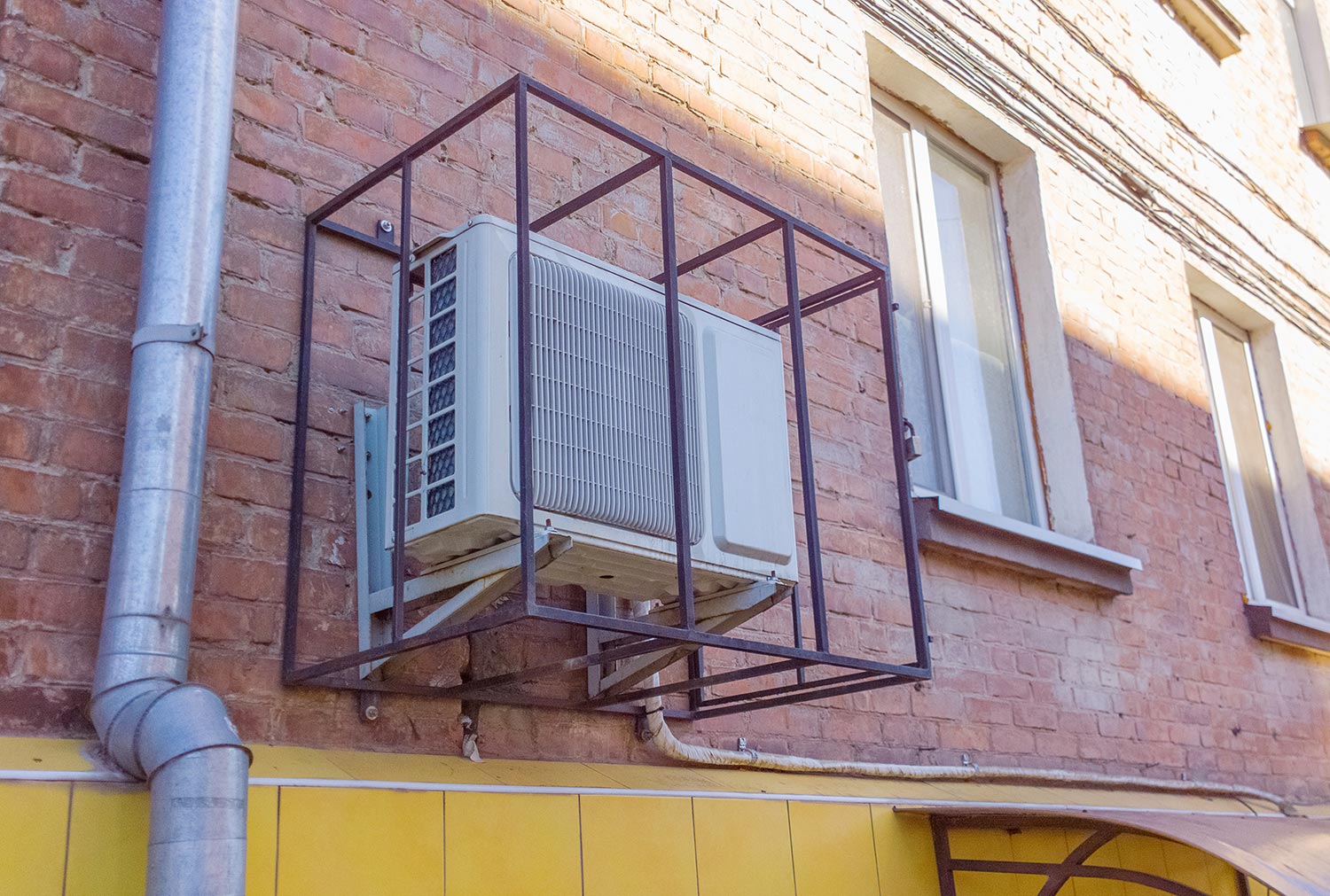You have your mini-split air conditioner installed in your home. And for some reason, you are considering putting the condenser unit in the garage. Will this work out? We consulted the experts in order to give you the right answer for your convenience.
The answer is no. Your AC’s condenser unit should be positioned outdoors where it has unrestricted access to outdoor air. If it is positioned indoors (the garage is considered such), its capacity to extract heat from your home is greatly reduced, thus affecting the cooling ability of your AC unit.
Having your air conditioner installed is not enough. There are still other factors to consider that affect the performance of your cooling system and one is the placement of the condenser unit. Stay on this page as we dive in depth and discuss the importance of the placement of a mini-split condenser unit.

Why Does The Condenser Need To Be Outside Of Your Home?
For many homeowners, the garage is just an extra space in the house. They don't consider it to be a living space either. Hence, for homeowners with mini-split systems, it is not surprising that they would consider placing the condenser units in the garage. Little do they realize its overall effect on the cooling system of the house and the working efficiency of the condenser units.
Essentially, it is always recommended that condenser units be installed outside of the house for these important reasons:
Unrestricted Access to Outdoor Air
While the indoor unit of the air conditioner removes heat from the inside, the outdoor condenser unit has the role to absorb the heat removed and expel it to the outside. It is important that it should be installed outside so that it could effectively function to get rid of the heat and thrust it out to the outdoor.
Also, the condenser needs a sufficient air supply to cool the gaseous refrigerant from the evaporator. Its main function is to revert the refrigerant vapor back into liquid form for reuse and make its way back to the indoor unit.
If the condenser unit is installed indoors such as in the garage, it will limit the volume of heat that it is able to extract from your living space. And the heat extracted will just circulate within the garage. This situation will get worse since the heat accumulated at the garage will diffuse into your home’s living space.
Adequate Airflow
Let your condenser unit “breathe freely” in case there are obstructions present within 3 to 4 feet around the condenser. HVAC professional has set up guidelines on the prescribed distance between the unit and the obstructions which will be discussed in the section below.
Some homeowners are keen on the design and appearance of their exteriors. And since condenser units are placed outside, balusters, wrought iron, or any decorative panel are attached to enclose the condenser for a more aesthetic view. In this case, there should still be openings, though discreet, in these enclosures for adequate airflow as seen in the photo below.

Other Things to Consider When Placing Your AC Condenser
Since your condenser unit should be installed outside, you should think about the specific site to where you will position it. Here are certain factors to consider before you decide:
There should be sufficient shade from the sun
Position your condenser units in a place where there is not much sun exposure. If there is enough shade, there are fewer chances that your unit will overheat. Constant sun exposure will add to the heat within the condenser, which will give it undue strain, thus hastening wear and tear.
Building an awning over the condenser unit can also be a good remedy for sun exposure. Though this option could be more expensive since there should be one awning for every unit. Yet, awnings give aesthetic value while functional at the same time.
Other homeowners plant a shaded tree nearby. Still, others position their condenser units high up of their exterior wall near the roofing of the house structure. In this way, the roof extension provides shade to the condenser as seen in the photo below.

The ground should be flat and stable
Just like any machine or mechanical device, the condenser should be mounted securely and on stable ground, that is, if you intend to position it on the ground. It should be on a flat surface, not sloped, dipped, or bumpy soil. A concrete pad on the ground may be constructed to ensure an even and stable surface for mounting the condenser.
It is safety-proof
Secure the condenser in a place where it may not pose a safety hazard. It should be positioned in spaces away from children or where pets are used to play. Also, avoid spaces that obstruct path walks or there are many passersby.
The Importance of Placing Condenser Units Outside
The air conditioner works by exchanging heat with the surrounding air of the condenser. During summer, the condenser expels heat to the outside air. While during winter, it absorbs heat from the outside air.
If the condenser is positioned outside, it does not matter how much heat it will thrust out since there is infinite air. You have peace of mind while enjoying the cool air in your living space because the heat exchange of your mini-split runs smoothly.
If the condenser is placed in the garage, its surrounding air is limited since it is enclosed indoors. If it expels heat during summer, it makes the garage feel hot and the indoor temperature rises.
Similarly during winter, when the condenser absorbs heat circulating within the garage, the indoor temperature will drastically drop. The smaller the garage space, the more evident are the temperature changes.
And the result? The efficiency of the condenser will be significantly reduced if it dumps its heat into the hotter air at the garage during summer. Consequently, if the indoor temperature gets too hot, the condenser coils will not be able to liquefy the refrigerant and the AC’s cooling effect could hardly be felt.
Instead, the refrigerant will revert back to the evaporator coils in high temperature and pressure. If you allow this situation to persist over long periods, your whole air conditioning system will eventually fail. There will be serious and more expensive damage to both the evaporator and condenser coils.
Spacing Guidelines in Positioning Outdoor Condenser Units
As discussed in the preceding section, adequate airflow for the condenser units is given utmost importance for its smooth operation. Obstructions are inevitable and HVAC professionals have categorized such into 4 types. The list also states the clearance or the spacing requirements in each category:
Constructional Obstructions

This refers to the wall, fence, or any similar structure. The rule of thumb for the clearance requirement is a minimum of 2 feet between the condenser and the obstruction.
If the condenser is positioned near a window or an entry door, this is allowed provided the air vented out does not enter the indoors. The drawback of this setup, though, is that long hours of operation may induce the exhaust air to increase the indoor temperature as seen in the photo below.
Landscaping Obstructions
This refers to shrubs, thick vegetation, and long blade grass. The rule of thumb for the clearance requirement is at least 2 feet between the condenser and the obstruction.
Homeowners perceive that plants and shrubs give a non-obtrusive look on the installed condenser units at the exterior wall. This is allowed provided the plant outgrowths are trimmed regularly.

Mechanical Obstructions
This refers to vents of the kitchen exhaust, dryer outlet, and appliance outlet. The rule of thumb for the clearance requirement is 4 to 8 feet between the condenser and the obstruction.
Other mechanical systems such as oil tank fill valves and gas vents pose fire hazards if condenser units are placed in close proximity. You need professional installers for a thorough assessment if this setup cannot be avoided.

Multiple Outdoor Units Positioned in Cose Proximity to each other
Many condenser units compete for the air intake. Most likely a unit will absorb the warm air vented out by the other unit, thus seriously degrading its performance. The rule of thumb for the clearance requirement is a minimum of 4 feet between each condenser unit.
In Summary
Positioning your mini-split condenser units at the garage is a big no. It should always be placed outdoors, either attached to the exterior wall or above the ground.
To enable your condenser units to have a long serviceable life, it is highly important to have their correct placement outside of the house. They should be mounted on a flat surface if you intend to position them on the ground. Also, each condenser unit should not pose to be a safety hazard to children, pets, and passersby.
In order for the condenser units to function efficiently, the heat exchange should be expelled to the outside air. There should be an adequate sunshade and sufficient airflow without nearby obstructions.
Before you go, check out these posts for related topics on mini-split systems:
Mini Split Dry Mode Vs. Dehumidifier: What's The Difference?
Ductless Air Conditioning Not Cooling - What Could Be Wrong?
